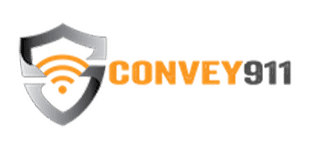BREAKING THE MONOLITH
The Hidden Cost of ‘All-in-One’ Technology for Emergency Response
Every day, call takers and dispatchers rely on layers of technology to answer calls, share information, and keep communities safe. But too often, those technologies are bound together in one massive, closed-off system—a monolith—that limits how people and data can move.
What Is a Monolith?
A monolith is a single, massive block of stone—something solid, immovable, and unified. Think of an ancient monument carved from one piece of rock: strong, but impossible to reshape without breaking it apart.
In technology, the term describes a system built the same way—everything fused together into one solid structure. Each function depends on the others, so even a small change —like adding a new feature or integrating an outside tool— requires tearing into the whole system.
What a Monolith Looks Like in 9-1-1
You’ve seen it: a “one-stop shop” solution that promises to handle recording, QA, analytics, transcription, and translation—but only within its own ecosystem. It might seem convenient at first, but as needs evolve—AI tools, new data sources, cloud expansion—those closed systems become barriers instead of enablers.
Closed vs. Open Systems
The biggest debate in public-safety technology today isn’t cloud vs. on-prem—it’s closed vs. open. Closed systems use proprietary formats, vendor-controlled integrations, and custom exports that make your data hard to access. Open systems, by contrast, are built on standardized formats and modern APIs that let agencies plug in the tools they want, when they want them.
| Closed System | Open System |
|---|---|
| Proprietary/vendor specific data formats | Standardized/open data formats |
| Single vendor integrations | Multi-vendor integrations |
| Data locked in | Data normalized & portable |
| Replace to upgrade | Extend and Expand |
Proprietary vs. Standardized
When your recordings, logs, or CAD data are locked behind proprietary formats, you’re forced to use the vendor’s software—or their technicians—to extract value. Open, standardized formats put the agency back in control. Data can move freely to other tools for transcription, translation, QA, or analytics without friction.
Single-Vendor vs. Multi-Vendor Integrations
Closed systems restrict agencies to “certified” partners. An open model built on APIs lets agencies bring their own tools—AI engines, analytics platforms, or dashboards—and connect them seamlessly to existing systems.
Locked-In Data vs. Normalized Data
Data that can’t leave the system isn’t truly yours. Open ecosystems normalize data into consistent, usable formats so it can flow where it’s needed—between agencies, to analytic tools, or into future systems that haven’t even been built yet.
Replace to Upgrade vs. Extend to Expand
With closed systems, every major feature upgrade becomes a forklift replacement. Open architectures evolve. You can extend what you already have—add cloud storage, scale capacity, or integrate new functionality—without ripping out what works.
Hidden Costs of Vendor Lock-In in Emergency Communications
When a 911 or dispatch center depends on technology from a single vendor, the consequences go far beyond budget. Closed or “locked” systems make it difficult—and often expensive—to adapt, upgrade, or integrate new tools. The real risk isn’t just the cost—it’s how that lock-in limits your ability to evolve. Agencies can find themselves unable to add critical features that would help them manage staffing shortages, respond faster under pressure, or adopt new capabilities as challenges emerge.
Many vendors reinforce this dependency with long-term contracts and high exit fees, keeping agencies tied to outdated or underperforming technology. Without the flexibility to extend or upgrade on your own terms, you’re stuck waiting for vendor-driven update cycles and promised fixes that may never arrive.
And when all of your systems run through a single point of failure, one outage or disruption can bring everything down—impacting uptime, response, and even lives.
The Bottom Line
A monolithic approach doesn’t just limit your technology—it limits your people. It slows down dispatchers, locks up data, and makes it harder for agencies to adapt to new demands.
The Breaking the Monolith webinar series explores how agencies can escape these constraints—moving toward flexible, open, data-driven systems that empower the humans behind the headset.
Breaking the Monolith Webinar Series
This six-part educational series explores how agencies can move beyond rigid platforms toward flexible, best-of-breed solutions that work together seamlessly and free your teams to do their best work when lives depend on it.
Join us for six monthly 45-minute sessions (30 minutes of presentation plus 15 minutes of Q&A). Register once and choose to attend one, several, or all six—the choice is yours.



